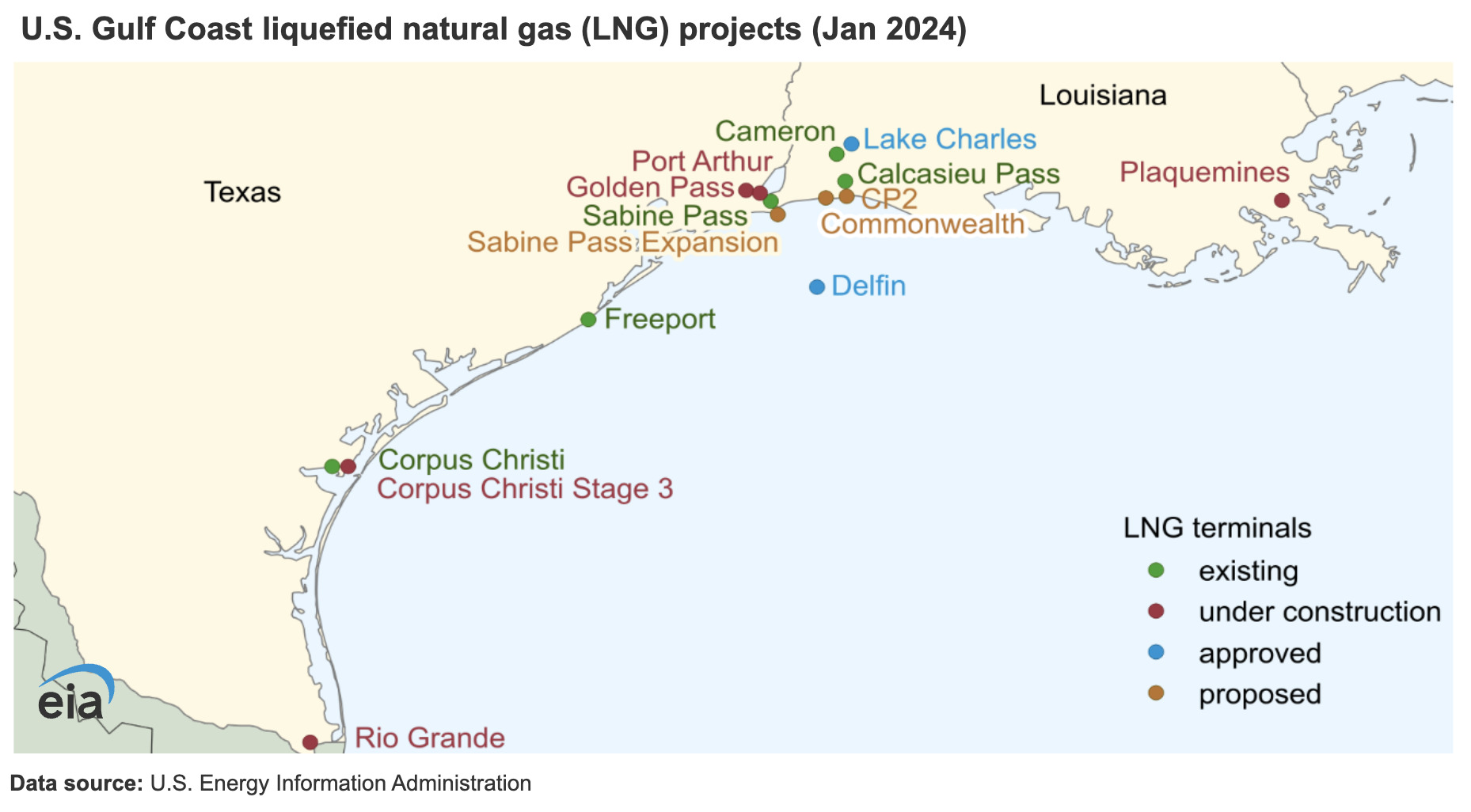
The analyst said there are plenty of growth opportunities in the sector in the coming years, as natural gas demand is expected to dramatically increase for the rest of the decade. (Source: Shutterstock)
SAN ANTONIO, Tex. — Some much-needed natural gas egress capacity is coming to the Permian Basin soon, but one analyst pointed out Sept. 23 that, so far, the gas isn’t going to the most logical (or profitable) place.
Connor McLean, senior energy analyst with FactSet, noted at the GPA Midstream Convention that the two major U.S. natural gas pipelines expected to come online over the next two years are not headed to the center of U.S. LNG production.
“Permian pipelines are not reaching where LNG demand is,” McLean said. “LNG demand is concentrated mostly in Southeast Texas and Southwest Louisiana.”
McLean spoke during the opening session of the GPA conference, addressing the topic of “Risks and Opportunities in U.S. Natural Gas Midstream.” The analyst said there are plenty of growth opportunities in the sector in the coming years, as natural gas demand is expected to dramatically increase for the rest of the decade to meet the increasing needs of the U.S. power sector and LNG exports.
However, building out the infrastructure remains difficult in a market that faces plenty of regulatory and logistical hurdles.
In the Permian Basin, producers have focused primarily on getting the natural gas out of the region. The Midland and Delaware basins are focused on crude production; gas is an unwanted byproduct. Egress out of the region has been full for a year and natural gas has suffered negative pricing for most of the summer.
McLean pointed out that the two pipelines slated for the region will fill rapidly, with the gas delivered to markets that are also close to capacity.
Whitewater’s Matterhorn Express pipeline is in the startup process and will carry about 2.5 Bcf/d of natural gas to the Houston market. The recently announced Blackcomb pipeline, which will deliver natural gas to South Texas, is slated to begin operations in 2026.
Both regions have one LNG liquefication facility each (Freeport and Cheniere’s Corpus Christi Lsite). The hub of U.S. LNG production is farther east, on the Texas-Louisiana border, with three LNG facilities operational and another two under construction.
“We have approximately 1.5 Bcf/d of space on existing interstate pipelines between Texas and Louisiana. As recently as 2023, it’s been quite full,” McLean said.

Some cross-border capacity has opened up since then, but not enough to handle the extra natural gas from the Matterhorn Express coming online; not to mention the Blackcomb in 2026.
Some other projects are underway that will increase the pipeline capacity between the two states. Williams Cos.’ Louisiana Energy Gateway Project, scheduled to come online in 2025, will add some additional capacity. The project was delayed six months in a legal battle with Energy Transfer.
McLean said that many other projects face similar difficulties, especially with cross-border transport pipelines that fall under federal oversight.
Meanwhile, the Northeast U.S. is a “graveyard for pipeline projects,” thanks to stiff opposition to any development in the region, he said.
The most likely outcome, therefore, is that the Haynesville Shale, located in northwest Louisiana and northeast Texas, will become the main supplier of a growing LNG market in South Louisiana. McLean said he expected an increase of 10 Bcf/d of demand from the basin through 2030.
Nevertheless, the available supply of cheaply produced gas from the region is not enough to meet the projected demand after the end of the decade.
“The Haynesville has the capacity to grow, but the longevity of the basin is in question,” he said. Producers will most likely need a higher return to keep gas production economically feasible in the Haynesville or will be forced to bring in product from further away.
Recommended Reading
Crescent Energy Closes $905MM Acquisition in Central Eagle Ford
2025-01-31 - Crescent Energy’s cash-and-stock acquisition of Carnelian Energy Capital Management-backed Ridgemar Energy includes potential contingency payments of up to $170 million through 2027.
Petro-Victory Buys Oil Fields in Brazil’s Potiguar Basin
2025-02-10 - Petro-Victory Energy is growing its footprint in Brazil’s onshore Potiguar Basin with 13 new blocks, the company said Feb. 10.
Apollo Funds Acquires NatGas Treatment Provider Bold Production Services
2025-02-12 - Funds managed by Apollo Global Management Inc. have acquired a majority interest in Bold Production Services LLC, a provider of natural gas treatment solutions.
Report: Diamondback in Talks to Buy Double Eagle IV for ~$5B
2025-02-14 - Diamondback Energy is reportedly in talks to potentially buy fellow Permian producer Double Eagle IV. A deal could be valued at over $5 billion.
VAALCO Acquires 70% Interest in Offshore Côte D’Ivoire Block
2025-03-03 - Vaalco Energy announced a farm-in of CI-705 Block offshore West Africa, which it will operate under the terms of an acquisition agreement.
Comments
Add new comment
This conversation is moderated according to Hart Energy community rules. Please read the rules before joining the discussion. If you’re experiencing any technical problems, please contact our customer care team.






